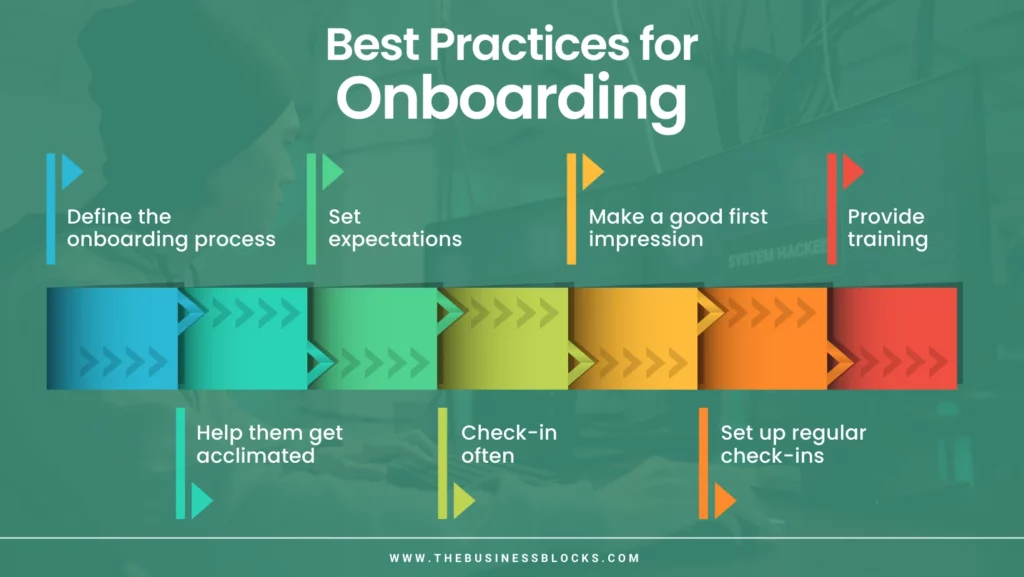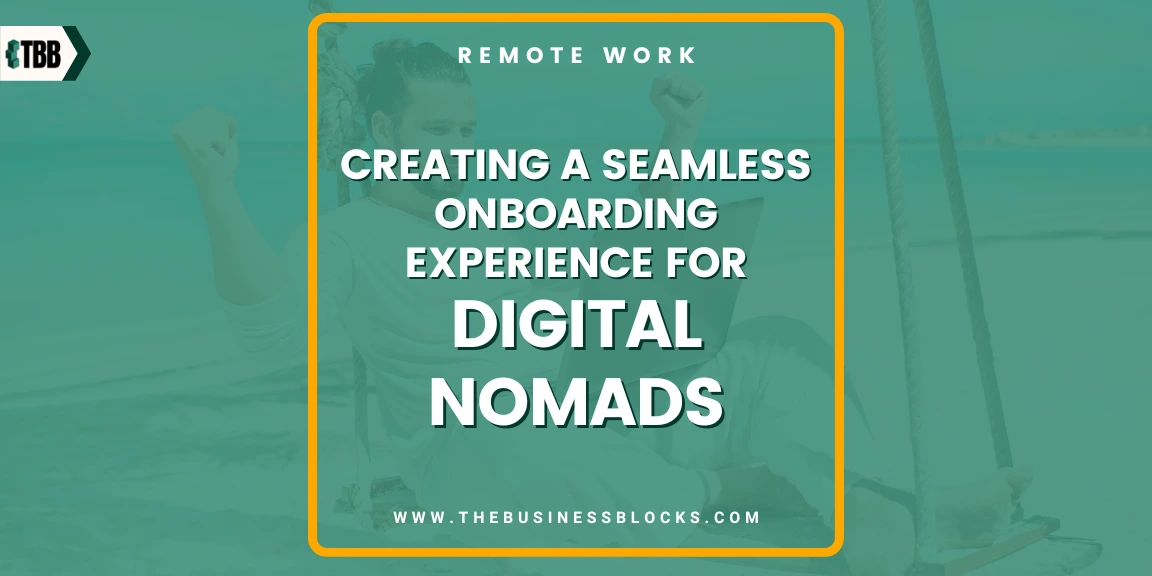In today’s world, traveling has become greatly accepted by many companies looking to hire new professionals. The advancements in technology, it has even made it possible for them to be a part of their organization remotely. As such, introducing digital nomads to the onboarding experience has become a great way to bring in more opportunities for remote working.
Are you an Employer looking for a way to ensure your remote teams onboard quickly and efficiently?
Creating a seamless onboarding experience for digital nomads is key to ensuring the success of their projects. But what does that really mean? It means more than just setting up equipment and understanding job duties. It’s also about providing access to resources, training on how to use tools properly, support from colleagues and supervisors, clear company policies and regulations, as well as allowing them flexible working hours they need in order to maximize productivity.
Whether you’re hiring experienced or inexperienced remote workers, the onboarding process should be tailored to their needs. This includes introducing them to their team, setting expectations from day one, and clearly defining job responsibilities. Additionally, it’s important to create an environment where digital nomads can quickly become a part of the workflow with ease.
What is Onboarding Process?
The Onboarding Process is a crucial step in the success of a new hire. It refers to the process of integrating new employees into the organization and making them feel welcome and supported. Effective onboarding can positively affect the organizational culture and impact employee retention, productivity, and job satisfaction, while a poor onboarding experience can lead to disengagement and potential turnover.
The onboarding process typically includes orientation, training, introductions to other team members, and supervisors, and familiarization with company policies and procedures. It is important to have a well-planned and structured onboarding process to ensure a smooth transition for the new employee and to set the stage for their future success in the company.
Recruiting Process Guide
The hiring process is a critical aspect of any business as it ensures that the right candidate is selected for the job. However, hiring the right person is not always an easy task. It requires a lot of effort and careful consideration to ensure that the best candidate is selected. Moreover, the hiring process is not just about selecting someone for the job but also about branding your company as a great place to work.
Therefore, it is crucial to develop a guide for hiring that outlines the process from start to finish. This guide will help you to find top-notch candidates who align with your company’s values and goals.
The guide for hiring should include the following elements:
- Defining the job role and responsibilities
- Identifying the key skills and qualifications you are looking for
- Developing a recruitment process, including how to source candidates
- Setting up interviews and evaluating applicants
- Making an offer to the chosen candidate
By following this guide, you can be sure that your hiring process is as effective and efficient as possible. With the right candidates in place, you can ensure that your business runs smoothly and meets its goals.
7 Onboarding Best Practices Hiring Managers Should Know About

1. Define the onboarding process
The onboarding process is the process of orienting and acclimating new employees to their jobs, duties, and workplace. The goal of the onboarding program is to help new employees feel comfortable and confident in their roles so that they can be productive members of the team.
2. Set expectations
Before the first day on the job, it is important to set expectations with new employees about what their roles will entail. This can be done through job descriptions, performance reviews, or one-on-one meetings with their supervisors. It is also important to let new employees know what your entire company’s culture and values are so that they can be aligned with those from the start.
3. Make a good first impression
First impressions are important, so you want to make sure that new employees have a positive onboarding experience and work culture from the start. This can be done by providing a warm welcome on their first day, giving them a tour of the office, and introducing them to their co-workers. You also want to make sure that their workstation is set up and that they have all of the supplies they need to do their job.
4. Provide training
One of the most important aspects of successful onboarding is providing training that covers the essential skills and knowledge that new employees need to do their jobs well. This training should be tailored to each individual’s role and level of experience.
5. Help them get acclimated
In addition to providing training, it is also important to help new employees acclimate to their work environment and company culture. This can be done by assigning a buddy or mentor, inviting them to social events, and making sure they have an opportunity to meet with different departments within the hr department of the company.
6. Check-in often
During the first few weeks or months on the job, it is important to check in with new employees frequently to see how they are doing and if they have any questions or concerns. This can be done through one-on-one meetings, performance reviews, or even just casual conversations.
7. Set up regular check-ins
In addition to checking in frequently during the first few weeks or months on the job, it is also important to set up regular check-ins after that initial period has passed. These check-ins can help ensure that employees are still adjusting well to their roles and that employees feel that they have everything they need to be successful in their jobs long-term.
What Hiring Managers Should Know About the Onboarding Experience of Remote Staff
Onboarding remote staff is a growing trend, as more companies are turning to virtual teams in order to stay competitive. While this type of setup offers many advantages, there are some challenges that come along with it as well. That’s why it is important for hiring managers to be aware of the unique needs and obstacles associated with onboarding remote staff.
- First, hiring managers should be aware that remote employees require the same level of attention and investment in onboarding as those who are physically present. This means providing training, assigning a mentor or buddy, and setting up regular check-ins to ensure that they have everything they need to succeed.
- Additionally, it is important to remember that remote employees are not always able to come into the office for face-to-face meetings, so it’s essential to set up systems that enable efficient communication and collaboration.
- Finally, hiring managers should keep in mind that onboarding remotely can be more time-consuming than onboarding in person. To ensure a smooth transition and successful start for remote employees, it is important to prepare thoroughly and allow for extra time in the onboarding process.
Overall, when it comes to onboarding remote staff, hiring managers should be aware of the unique needs and challenges associated with this type of setup. By taking the necessary steps to ensure a successful transition, they can help set their new team members up for success.
Tips for Establishing Clear Expectations
Establishing clear expectations is an essential part of any business and can help ensure that everyone involved in the company understands their roles and responsibilities. This can help to prevent confusion or misunderstandings, as well as foster better relationships between employees and employers.
1. Provide job descriptions – Detailing out each employee’s duties and responsibilities should be the starting point for setting expectations. This will help everyone understand what is expected from them in their position.
2. Communicate regularly – Regular communication between employers and employees is key to avoiding any confusion or misunderstandings. Make sure to provide feedback when needed and encourage open dialogue between the two parties.
3. Set goals – Setting measurable goals for each employee helps to create a more productive work environment. Encourage employees to set their own personal goals as well, so that they can strive for excellence in their positions.
4. Foster a positive environment – Having an open and collaborative workplace can go a long way in creating the right atmosphere for setting expectations. Encourage employees to work together, share ideas, and provide feedback to each other.
By following these tips, you can ensure that everyone involved with your business understands exactly what is expected of them. This will help create a more productive and efficient work environment.
Frequently Ask Questions about Creating a Seamless Onboarding Experience for Digital Nomads
Q: Why are these best practices for onboarding significantly?
A: These best practices for onboarding are important because they help ensure that new employees are given the proper orientation, training, and support to be successful in their roles.
Q: How do I ensure my digital nomads feel secure in their roles?
A: To ensure your digital nomads feel secure in their roles, provide them with clear and concise job descriptions that accurately communicate their responsibilities. Additionally, create a safe environment where they can ask questions and receive feedback without fear of negative repercussions.
Q: What are the benefits of using an online onboarding process?
A: An online onboarding process can save time and money by eliminating paperwork and administrative tasks associated with hiring new employees. Additionally, it can provide a faster, more consistent experience for digital nomads since they don’t need to be present for orientation or training sessions.
Final Thoughts
To sum up, digital nomads are an ever-growing segment of the modern workforce, and with that comes the necessity of an onboarding checklist for businesses to understand and embrace their different needs. Creating a seamless onboarding experience requires creativity from hiring managers and a deep knowledge of the digital nomad mindset.
When it comes to recruiting top talent while fostering long-lasting relationships, there is no real alternative but to invest in this process as an effective means to ensure the long-term success of any business. So, take responsibility now—invest your time and resources wisely into creating the best employee onboarding experience available! Hiring managers: the future of your business depends on it.

